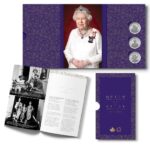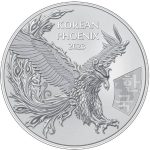CANADA 1867 – 2017 $10 POLYMER BANKNOTE IN CURRENCY HOLDER – CELEBRATING CANADA’S 150TH – CRISP UNCIRCULATED
USD 9.02
Out of stock
Notify me when item is back in stock.
USD 9.02
Out of stock
Notify me when item is back in stock.
I bought 2 Canadian banknotes which have no folds or creases. The delivery I was quick and the service was excellent!
To commemorate Canada’s 150th Anniversary, the Bank of Canada has released these special $10 polymer banknotes. The bill has lots of features which you can see below.
ORDER MORE THAN ONE AND RECEIVE CONSECUTIVE SERIAL NUMBERS
It has the pictures of the following people:
Sir John A. Macdonald
Sir John A. Macdonald was a Father of Confederation and Canada’s first prime minister, 1867-73 and 1878-91. Under Macdonald’s leadership and vision, the Dominion of Canada was founded, grew and expanded until it stretched from sea to sea to sea.
Sir George-Étienne Cartier
Sir George-Étienne Cartier was a principal architect of Canadian federalism and a proponent of Confederation as a means of safeguarding French Canada and other minorities. Cartier led Quebec into the Dominion and later participated in the expansion of Canada west to the Pacific and north to the Arctic Ocean.
Agnes Macphail
Agnes Macphail was a champion of equality and human rights who, in 1921, became the first woman elected to the House of Commons in Canada. Entering politics to represent the interests of farmers in her riding, Macphail became an advocate of the working class and defender of marginalized groups such as women, miners, immigrants and prisoners.
James Gladstone (Akay-na-muka)
James Gladstone, a member of the Kainai (Blood) First Nation whose Blackfoot name is Akay-na-muka, meaning “Many guns,” committed himself to the betterment of Indigenous peoples in Canada. In 1958, he became Canada’s first senator of First Nations origin.
And the following features:
Forming Canada
The names of all of Canada’s provinces and territories and the dates when they entered Confederation are repeated in English and French across the top and bottom of the large window. The order in which the names appear follows the official order of precedence and lists the provinces followed by the territories.
Memorial Chamber Arch
This arch is located inside the Memorial Chamber of the Peace Tower on Parliament Hill. The Memorial Chamber was dedicated in 1927 to all Canadians who died in military service during the First World War. The chamber has since come to honour all Canadian men and women who gave their lives in service to their country.
Hall of Honour
The Hall of Honour is the central corridor of the Centre Block on Parliament Hill. This neo-Gothic passageway, with its remarkable ribbed vault ceiling, leads from Confederation Hall to the Library of Parliament. The House of Commons is directly to its west, the Senate Chamber to its east. The Centre Block is where national issues are considered and examined, and where legislation is introduced, debated and passed into law.
Coast Mountains
These iconic peaks overlook Vancouver, British Columbia, and were given the name The Lions by John Hamilton Gray, a Father of Confederation who later served on the Supreme Court of British Columbia. The local Squamish people (Skwxwú7mech in the Squamish language) know the peaks as Ch’ich’iyúy Elxwíkn or the Twin Sisters. The view of these peaks shows Capilano Lake in the foreground, named after the supreme chief of the Squamish people.
The Prairies
Stalks of wheat ripen on a family farm outside of Regina, Saskatchewan. Emblematic of Canada’s Prairie provinces, wheat is one of the most important cultivated crops in all of Canada. The bulk of Canadian wheat is grown in the Prairie provinces of Western Canada: Saskatchewan is the largest producer, followed by Alberta and Manitoba.
The Canadian Shield
A forest stands on the bank of the Kipawa River, which ripples across the ancient rock of the Canadian Shield in Parc national d’Opémican in the Abitibi-Témiscamingue region of Quebec. Stretching from northern Alberta to Newfoundland and Labrador and from central Ontario to the Northwest Territories and Nunavut, the Shield covers 4.8 million square kilometres, roughly half the total land area of Canada.
The Atlantic Coast
The Atlantic Ocean meets the rocky coast of Cape Bonavista in Canada’s eastern-most province of Newfoundland and Labrador. The nearby town of Bonavista, established in the late 1500s, is one of the earliest European communities in North America. The Cape is a possible landing site of John Cabot, who sailed to North America in 1497.
The Northern Lights
The northern lights dance above Canada’s largest national park, Wood Buffalo. This incredible natural preserve is one of the largest national parks in the world, straddling the boundary between Alberta and the Northwest Territories. Designated by the Royal Astronomical Society of Canada as the world’s largest dark sky preserve in 2013, Wood Buffalo is one of the most ideal places on Earth to see the northern lights.
Assomption Sash
This pattern is based on the distinctive Assomption sash (also known as the arrow sash), which is an important cultural symbol of the Métis people. The sash also has significance to French-Canadian culture. Worn by habitants, the sash became a hallmark of the voyageurs and fur traders in the 18th century.
Owl’s Bouquet
Owl’s Bouquet is a stone-cut and stencil print by acclaimed Inuit artist Kenojuak Ashevak (1927-2013). Ashevak is perhaps the best known Inuit artist, whose work helped to introduce Inuit art to the world. Ashevak lived and worked in Cape Dorset, Nunavut, the last territory to join Confederation, in 1999.
The Provinces and Territories
Thirteen maple leaves, linked by their stems, represent each of Canada’s provinces and territories. Their appearance is based on the maple leaves found in Canada’s coat of arms.
The Maple Leaf
The national flag of Canada is featured in the large window. The word “Canada” is included twice so that it can be read from both the front and back of the note.
Canada’s Coat of Arms
The coat of arms is an official symbol of Canada, representing the authority of the state and designed to inspire love of country.



